

WEEK 24: JUNE 7-13
TOPIC: “SMALL BODIES” IN CULTURE AND LITERATURE
Although they may not be as big a presence in our overall human culture and literature as the moon and the other planets of our solar system are, the “small bodies” of our solar system are nevertheless present. There a number of misperceptions about them, perhaps more so than there are for the planets.
Consider, for example, the way that the main asteroid belt – and similar constructs in other planetary systems – are portrayed in fiction. Almost every depiction of asteroids – including the Atari video game “Asteroids” that was a very popular arcade game during the 1980s and which I was quite fond of playing at the time – portrayed the realm of asteroids as being a congested region full of ominous threatening objects that took a great deal of skill to navigate through without hitting one (or being hit by one). In reality, the volume of space that makes up the main asteroid belt is so large – 75 to 100 cubic A.U. or more – that the average distance between asteroids is on the order of several million km (15 to 20 lunar distances).
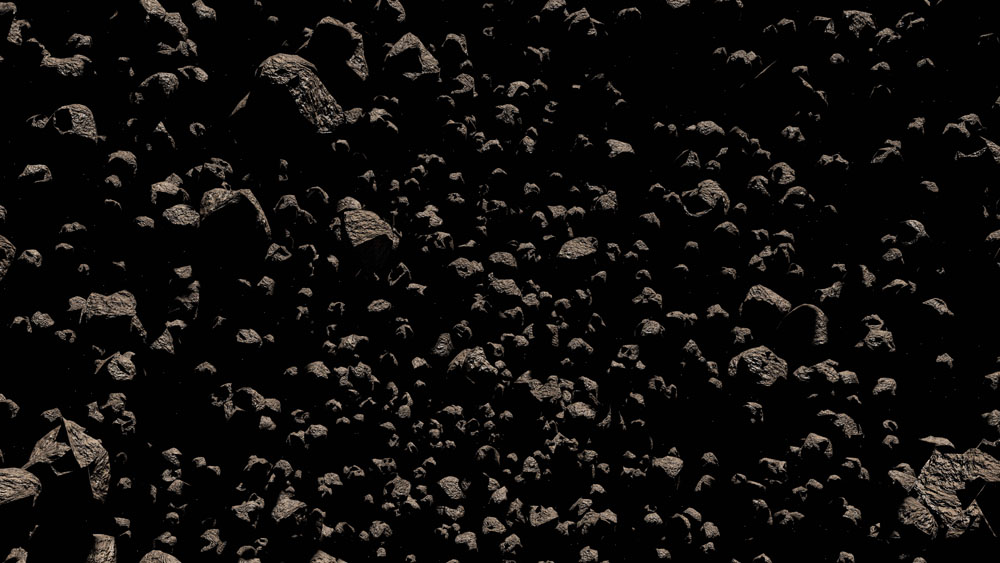
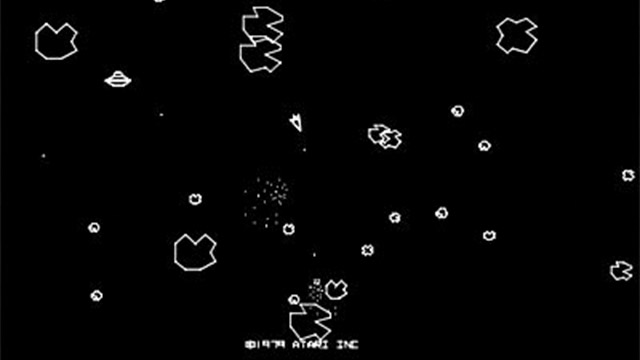 LEFT: A field of asteroids, as often erroneously depicted in movies and television programs. RIGHT: Display of the 1980s Atari video game “Asteroids.”
LEFT: A field of asteroids, as often erroneously depicted in movies and television programs. RIGHT: Display of the 1980s Atari video game “Asteroids.”
Indeed, the first spacecraft missions to the outer planets that traversed the asteroid belt – Pioneers 10 and 11 during the mid-1970s, and Voyagers 1 and 2 during the latter part of that decade – did so without ever encountering any asteroids while en route. Those spacecraft missions that have encountered asteroids since then – and which are discussed in a future “Special Topics” presentation – did so as a deliberate intent on the part of the mission planners. In practice, what is done nowadays is that when such a mission is planned, planners will look to see if there are any asteroids that might be near the expected trajectory, and if there are any such objects that can be visited without significantly affecting the overall mission timeline then such an encounter will be incorporated into the mission’s itinerary.
Bright comets have often been portrayed in art and literature, this in no small part being due to the long-time fear that they were omens of disaster or some other sort of divine messenger, and I discussed several such examples in a previous “Special Topics” presentation. Comet 1P/Halley, in particular, due both to its regular appearances throughout human history and its high brightness during those appearances, has often been featured in the art and literature of its respective times, as I discuss in the “Special Topics” presentation devoted to that object; the more prominent examples include its depiction on the Bayeux Tapestry commemorating the Battle of Hastings and its depiction in the “Adoration of the Magi” fresco created by Italian artist Giotto di Bondone.
Another example is the “Comet of the Week” from two weeks ago, the Great Comet of 44 B.C. that was widely perceived as being the soul of the recently-assassinated Julius Caesar being transported to heaven. It is depicted as such in Ovid’s “Metamorphoses” and is also alluded to in a line in William Shakespeare’s play “Julius Casear.” (The specific citations are quoted in that presentation.)
Stories involving fictional comets have been written and published on a relatively frequent basis. Two from prominent “classical” science fiction writers include “Off on a Comet” by Jules Verne (published in 1877) that describes a group of people carried away on a comet that has hit Earth and continued on, and “In the Days of the Comet” by H.G. Wells (published in 1906) that describes a world transformed by the gases of a comet that encounters Earth. A 1986

Incidentally, Jules Verne’s 1870 novel “Around the Moon” – a sequel to his classic 1865 novel “From the Earth to the Moon” – features as one of its plot elements a small asteroid that is a second moon of Earth. While this particular object is fictional, at least two temporary “second moons” of Earth – both roughly the same size as the object in Verne’s novel, although much more distant – have been discovered within the fairly recent past, and these objects are discussed as part of a future “Special Topics” presentation. Another Jules Verne novel, “The Chase of the Golden Meteor,” published posthumously in 1908, takes a somewhat satirical look at attempts to claim credit for and retrieve a small impacting object found to be made of gold.
Among “small bodies” short stories, an interesting one is “The Colour Out of Space,” published in 1927 by horror writer H.P. Lovecraft, and which concerns undesirable effects on the surrounding human populace following a meteorite fall. (The story has since been adapted into several movies, including “Die, Monster, Die!” in 1965 and “The Curse” in 1987.) Two notable “small bodies” stories by renowned science fiction writer Arthur C. Clarke are “Hide-and-Seek,” published in 1949, which takes place on Phobos, and “Jupiter Five,” published in 1953, in which an expedition to this moon – Amalthea, although it is not named within the story – turns out to be an alien artifact. A more recent interesting story is the 1986 novel “Heart of the Comet” by science fiction writers David Brin and Greg Benford, about an expedition to Comet Halley during that object’s next return in 2061. Arthur C. Clarke’s 1987 novel “2061: Odyssey Three” also begins with an expedition to Comet Halley in 2061, although the focus soon shifts elsewhere.
Another novel of that subject matter that is quite valid from a scientific standpoint is “The Hammer of God” by Arthur C. Clarke that was published in
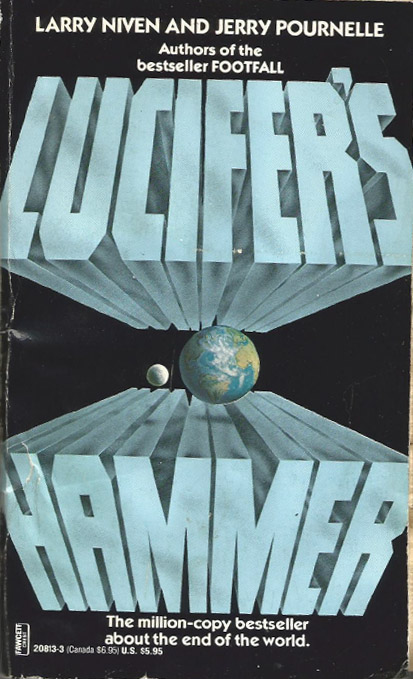

Depictions of this same theme in television and motion pictures run the spectrum from scientific plausibility to scientific nonsense, although most have tended to be on the less scientifically valid side of things. The 1995 Simpsons episode “Bart’s Comet” (which first aired less than six months before the Hale-Bopp discovery) could be considered an example of this, although since this was written and televised for satirical value it can certainly be appreciated on that basis. On the other hand, what perhaps can be considered a counter-example is the Star Trek original series episode “The Paradise Syndrome” (1968) which, while it does not take place on Earth, addresses this theme, including attempts at deflection, in a reasonably valid manner.
One of the earlier movie depictions of this theme was “When Worlds Collide,” released in 1951 (and based upon a 1933 novel written by Philip Wylie and Edwin Balmer). The idea of an unknown “rogue” star and planet entering the solar system and colliding with Earth is very implausible from a scientific perspective, although the movie’s overall plot is consistent with the “nuclear disaster” theme that was common for films of that era.
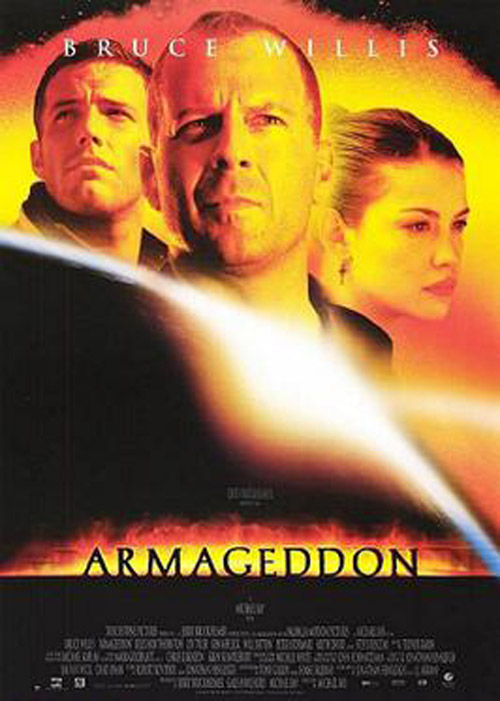
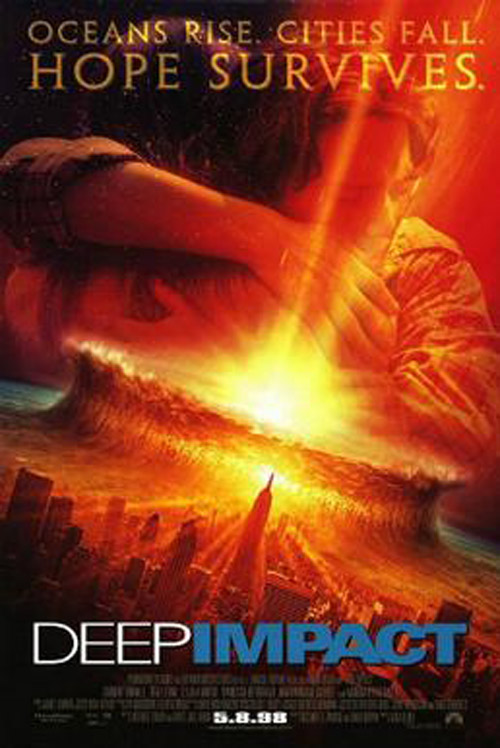

Of particular interest to me, for obvious reasons, are the various songs that were written about Comet Hale-Bopp around the time of that object's appearance in 1997. Many of these are quite obscure and, in all honesty, rather forgettable, although one notable piece is “Hale-Bopp, Hip-Hop” by jazz musicians Herbie Hancock and Wayne Shorter from their 1997 album

I perhaps should also mention that a trilogy of movies currently in development under the working title of “The Animator” features Comet Hale-Bopp as one of the plot elements in the second installment. I am assisting to some extent in the development of this movie project and for the time being am not at liberty to say much about it, but would ask “Ice and Stone 2020” participants to keep a watch for it sometime within the next two to three years.
Meanwhile, those “Ice and Stone 2020” participants who are interested and so inclined can search for the numerous other examples of stories and songs about and/or inspired by the solar system’s “small bodies.” Or, perhaps, participants can write some of their own, and if they wish can share them with the rest of us . . .
“Special Topics” archive
Ice and Stone 2020 home page
Earthrise Institute home page